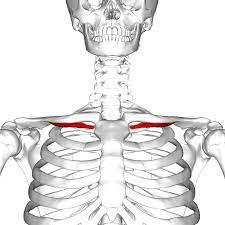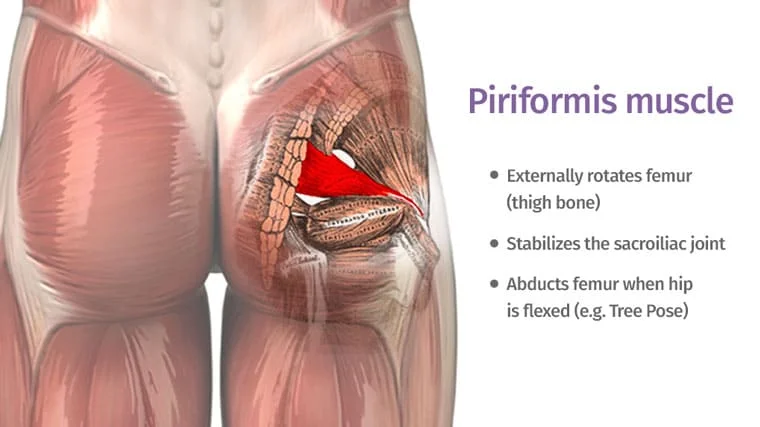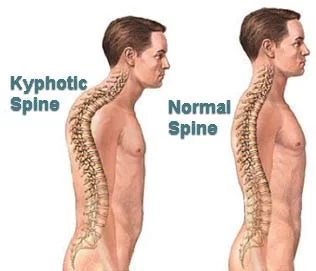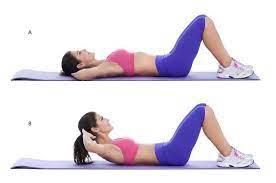World’s Greatest Stretch: Benefits, How to do?
Table of Contents
Introduction:
The World’s Greatest Stretch is a dynamic full-body stretch that improves mobility, flexibility, and muscle activation. It targets the hips, hamstrings, spine, and shoulders—making it ideal for warming up before workouts or athletic activities.
A popular mobility exercise among athletes, fitness fans, and physiotherapists is the “World’s Greatest Stretch.”It is thought to be among the greatest full-body stretches for improving mobility, flexibility, and body preparedness for exercise.
As people age, their endurance, flexibility, and range of motion can get worse, increasing the risk of accidents, difficulty, and tightness. Movement is essential for both long-term pain treatment and overall well-being.
It exercises all of the body’s major muscles, especially the ones we frequently overlook from spending all day at a desk or computer, and takes less than five minutes to complete, which is why it is so well-liked. You can perform it as part of your dynamic warm-up, at the end of a session, or to prepare your body for action because it’s a dynamic stretch with static components.
The World’s Greatest Stretch involves which muscles?
To improve circulation and get your muscles ready for the work ahead, you can perform this stretch dynamically during your warm-up, hold it still during your cool-down, or include it in a stand-alone mobility exercise.
You should feel an enjoyable stretch in your back foot, calf, and hamstrings while you are in a deep lunge position. You should also feel a stretch along the front of the quad of your extended back leg. As you extend into that area with your front foot flat on the floor, you should feel your hips open up and your glutes gently pull.
Your upper body then joins in, with one hand on the floor and the other extending straight up towards the ceiling. Your shoulders and back will feel the benefits of twisting your body as one hand supports your weight while the other reaches high into the air, opening up your chest and stretching your abdominal muscles.
After a few seconds of holding this position, switch sides for a static stretch during your cool-down. Rotate your arm slowly up and back down to the floor to generate a gentle twisting action for a more dynamic stretch during your warm-up. This is an excellent way to warm up and move your upper body, core, and spine.
Advantages of the stretch:
Prepares the Body for Athletic Performance
- This dynamic stretch enhances neuromuscular preparation before exercise.
- Ideal as a warm-up to prepare the body for jogging, deadlifts, squats, and HIIT exercise.
Promotes Healing and Mobility
- Apply it during cooldowns to prevent post-workout stiffness and restore normal joint ranges.
- Especially beneficial for people who require hip and spine decompression due to sedentary or heavy lifting jobs.
Enhances Blood Flow and Reduces the Chance of Injury
- It’s a dynamic action that helps increase blood flow and oxygen delivery to the muscles.
- Muscle and joint preparation reduces the risk of sprains, strains, and other soft-tissue injuries.
The Hip Flexors’ Range of Motion and Stretch
- The deep lunge position tightens the hip flexors, especially the iliopsoas, which can be caused by prolonged sitting.
- Regular exercise improves hip flexion and extension, which improves running, cycling, and lifting performance.
Increases Core Activation
- Strongly engages the core to maintain trunk stability throughout the activity, particularly when bending and reaching.
- Promotes overall core strength and neuromuscular control.
Encourages the use of functional movement
- The world’s largest stretch incorporates real-world motions like lunges and twists, encouraging functional flexibility that can be used for everyday tasks.
Improves Posture
- Opens up the chest and shoulders and engages the posterior chain, which consists of the spinal extensors, hamstrings, and glutes.
- Helps in resolving poor posture caused by prolonged sitting or screen time.
Helps in improving body coordination
- The complexity of the movements calls for coordination and focus, including both the body and the mind, which may improve general body awareness.
Increased Mobility of the Thoracic Spine
- Rotating the upper body is an important component of the World’s Greatest Stretch since it efficiently mobilises the thoracic spine (mid-back).
- This is essential for maintaining proper posture, moving above, and lessening shoulder and lower back strain.
Corrects Unbalanced Muscles
- Stretching and activating one side of the body at a time promotes autonomous training.
- Excellent for identifying and resolving differences in flexibility or strength between the left and right sides.
Improved Adductor and Groin Flexibility
- By effectively stretching the inner thigh’s adductor muscles, the lunge position, especially when combined with the elbow-to-instep component, improves groin flexibility and lowers the risk of injuries.
Before starting a stretching regimen, consider the following precautions:
To maximise the benefits of stretching, a few safety measures should be followed before beginning a program. For advice on the best stretch for your specific problem, consult your physician or a physiotherapist.
You should pay attention to your body rather than fighting suffering. Although pain from stretching is common, if it persists or gets worse, it may be a sign that you’re working yourself too much.
Consult a physician if you are uncertain about your capacity to commit yourself to a fitness program. Warm up before starting any activity to ensure your joints and muscles are prepared.
When the Greatest Stretch in the World Should Be Included:
Warm-up Before Exercise
- It’s a great dynamic warm-up that prepares your body for any type of exercise, including sports, running, and strength training.
Morning Routine for Flexibility
- Get your body moving and increase your range of motion by beginning your day with the World’s Greatest Stretch.
Cool-down After Workout
- Although mainly active, it can also serve as a useful cool-down stretch, focusing on muscle lengthening after an activity.
Sitting Breaks
- Doing the World’s Greatest Stretch a few times during the day can help offset the adverse effects of prolonged sitting if your job requires a lot of sitting.
Rehabilitation
- The World’s Greatest Stretch can be a useful tool for addressing specific mobility issues and recovering from particular injuries when used under a physiotherapist’s supervision.
World’s Greatest Stretch Video
How should the World’s Greatest Stretch be performed?
- First, take a wide plank posture on the floor.
- Before moving to the following phase, contract your core.
- When you take a move forward, your right foot should be outside your right hand.
- Make sure your knee is at a 90-degree angle just over your right foot.
- Maintain a straight left leg in a plank posture, or, if you’re altering, place that knee on the floor.
- Avoid rounding your upper back.
- Breathe in to open your chest to the right by raising your right hand and reaching it towards the sky.
- Avoid allowing your left hip to twist, maintain a firm core, and continue to keep your neck extended.
- Return your right hand to the floor.
- It’s one repetition.
- Then return to your neutral position.
- Then relax.
- Repeat these exercises 5 to 10 times.
- On each side, complete the same amount of repetitions.
World’s Greatest Stretch Variations:
Reverse Worlds Greatest Stretch
- Begin by standing on the floor.
- Your right foot should be used for a reverse lunge.
- Make sure both hands are inside your left foot.
- Drop your hand and move into a stretch for your hamstrings.
- Throughout the stretch transitions, take deep breaths.
- Hold this position for a few seconds.
- Take a step forward to stand again.
- Then return to your neutral position.
- Then relax.
- Repeat these exercises 5 to 10 times.
- Repeat the stretch after switching the legs.
World’s Greatest Stretch With Resistance Band-Assisted
- Secure a strong pull-up support band to a stable object in front of you by looping it over the rear of your upper thigh.
- Lean forward with the body to begin in a split squat position, which will stretch the hip flexor of the kneeling leg.
- Opposite the front foot, place one hand on the ground.
- Turn towards the ceiling, starting with your shoulders and upper back.
- Hold this position for a few seconds.
- Then return to your neutral position.
- Then relax.
- Repeat these exercises 5 to 10 times.
Side Lunge Worlds Greatest Stretch
- Begin by standing on the ground.
- Take a big stride with your right foot.
- Your left leg should remain straight as you lower your right knee.
- Maintain a tall chest and balance your weight over your midfoot or heel.
- Your left inner thigh ought to feel stretched.
- Slightly lower your body while keeping your hands on the floor near your right foot.
- This helps you prepare for the next step by opening your hips.
- Touch the ground with your left hand.
- With your right arm up towards the ceiling, rotate your chest.
- Feel your hip, shoulder, and thoracic spine extend as you hold for a few seconds.
- Then return to your neutral position.
- Then relax.
- Repeat these exercises 5 to 10 times.
World’s Greatest Stretch the World, Loaded (With Kettlebells or Dumbbells)
- At your sides, hold a dumbbell or kettlebell in each hand.
- Enter a deep lunge by stepping your right leg forward.
- Make sure your left leg stays upright behind you.
- One weight should be placed inside the front foot, or both should be kept at your sides.
- Gently lower the back knee if necessary.
- Lower your right elbow to the right foot’s instep.
- Experience the deep hip stretch.
- Raise your right arm towards the sky while keeping the dumbbell or kettlebell in your right hand and rotating your body open.
- Observers follow your hand.
- Maintain an active core to avoid spinal instability.
- This increases shoulder strength and anti-rotation stability.
- Straighten the front leg and encourage your hips back while lowering or holding the weights.
- You can add more posterior chain loading by leaving the weights dangling.
- Your hamstrings ought to stretch deeply.
- Then return to your neutral position.
- Then relax.
- Repeat these exercises 5 to 10 times.
- Do the same with the other leg.
Curtsy Lunge Worlds Greatest Stretch
- Place yourself on the ground and begin standing.
- Place more weight on your left foot.
- The heel of your right foot should rest outside the left heel, resembling a deep curtsy, as you step it laterally behind your left leg.
- After that, you drop into a lunge.
- So that your front knee is over your foot and your body remains straight.
- Your left glute and outside hip should feel this.
- You are now in a twisted kneeling lunge, which starts to stretch the rear hip flexor and opens up the front leg’s glute and hip.
- Touch the ground with both hands inside your left foot.
- Place your left elbow near the inside of your left foot and drop it towards the floor.
- If you can, keep your rear leg extended; if not, carefully rest your knee.
- Put your right hand down so you can maintain your balance.
- Next, elevate your left arm by lifting it upward.
- Keep your hips stable and your spine extended as you follow your hand with your eyes.
- Put your left hand down again.
- Move your hips and start to straighten your left leg.
- This stretches your calf and hamstrings.
- As you lean over the straightening leg, keep both hands on the floor.
- If you want a deeper stretch, flex your front foot.
- Then return to your neutral position.
- Then relax.
- Repeat these exercises 5 to 10 times.
What precautions need to be taken when doing the Greatest Stretch in the World?
Warm up before the stretch.
- Cold muscles can become strained when a deep dynamic stretch is performed without a warm-up.
- To activate your cardiovascular system, perform modest activity for three to five minutes before performing this stretch.
If you have limited movement or are injured, make adjustments.
- If you have tight hips, weak balance, or knee or back issues, the whole stretch may be too much for your body.
Take Your Time Performing the Motions
- Instead of evaluating strength or speed, the World’s Greatest Stretch focuses on improving mobility.
- Hold each position for a few seconds while performing each movement gently and cautiously to guarantee that muscles and joints engage correctly.
Avoid overstretching yourself.
- Pushing too much can tear muscles or overstretch ligaments, especially during a dynamic stretch.
- Instead of hurting, it should feel more like a stretch.
Increase Repetitions Gradually Over Time
- Even during a stretch, sudden intensity or overuse can cause injury or delayed onset muscle soreness (DOMS).
- Work your way up from two to three repetitions on each side as your flexibility and confidence grow.
Take a Deep, Natural Breath
- Holding your breath can cause unusually stiff muscles.
- Flexibility and oxygen supply are enhanced via breathing regulation.
Performance should never take place on a slick or bumpy surface.
- Slipping or instability might result in falls or sprains.
- A non-slip yoga mat or exercise mat should be placed on a flat surface for safety.
The Greatest Stretch in the World: When Should You Stop?
However, like any physical exercise, it must be done with awareness. Below are warning signs and reasons to quit completing the World’s Greatest Stretch, as well as detailed instructions on when to stop.
Excessive or Weak Muscle Use
- The muscles may be weak or trembling, especially the shoulders, hip flexors, glutes, and core.
- Stretching when tired can lead to poor form, which reduces performance and increases the chance of injury.
Dizziness, nausea, or lightheadedness
- Feeling nauseous, lightheaded, or dizzy during or after the stretch.
- This could be due to low blood sugar, dehydration, or poor breathing.
Experiencing Pain When Stretching
- Cramping in the muscles or a sharp, stabbing, or radiating pain in the spine, shoulders, hips, or knees.
- An indication that tissues are being overstressed and may be harmed is pain.
Poor Techniques or Weak Self-Control
- Bad posture not only lessens the advantages but may also be painful, especially in the shoulders and lower back.
Physical or Mental Tiredness
- Being inactive, disinterested, or afraid of the stretch during exercise.
- Consistency is essential; however, forced repetition without participation may lead to a lack of commitment or even dislike towards the mobility task.
Continual Clicking Sounds or Joint Pain
- With every repeat, you may experience hip, shoulder, or knee popping or crunching.
- Overuse or dislocated joints, which can worsen with continuous usage, may be the cause of this.
What typical mistakes should you avoid when performing the World’s Greatest Stretch?
Incorrectly placing the hands or feet.
- The front foot is either too close or too far forward, while the hand placement is either too short or too wide.
- Affecting balance and posture.
Extending too much during the twist
- Avoid overrotating when completing the twist portion, as this might cause pain in the back.
- Instead of the lower back, the thoracic spine (upper and mid-back) should be the primary cause of the twist.
Rapidly Getting Through the Motion
- Too quickly finishing the stretch without holding each position.
- Reduces the flexibility of the stretch.
- Increases the risk of strained muscles caused by a lack of control.
Ignoring your breathing
- Your muscles may get tense from improper breathing, which will reduce their ability to stretch.
- Breathing deeply and carefully helps promote calm and deepen the stretch.
Unable to engage the core
- In particular, the twist and reach components of the stretch can cause pain in your lower back if your core is not used throughout.
- In addition to providing stability, a strong and active core helps with spine support.
Lunge in Poor Quality
- One leg may drop with the knee contacting the floor, or the front knee may bend inward or extend past the toes.
- Incorrect positioning affects balance and stability.
Going too far
- Most importantly, listen to your body, particularly if you’re experiencing pain.
- Pushing through pain can result in injury, and pain that is more than just slight pain is an indication that something might be wrong.
- If this occurs, modify the stretch or consult a specialist if something doesn’t feel right.
Summary:
This exercise increases flexibility and mobility by using the entire body. It is highly recommended that those who are interested in fitness complete this exercise. Remember that although this stretch is great for most people, it is not suitable for everyone.
If you have any physical conditions or health problems, consult your doctor first.
The dynamic stretching workout known as “The World’s Greatest Stretch” works the hips, hamstrings, quadriceps, and core, among other muscle groups. To improve flexibility and mobility, a lunge stance is combined with additional twists and stretches. For anyone who wants to move more easily and experience fewer everyday aches and pains, or for professional athletes trying for excellence, incorporating the World’s greatest stretch into your regimen can be beneficial.
There are some considerations to make when performing the World’s Greatest Stretch. Take your time performing the movement to begin. Since finishing each step is not a race, regulate your breathing and simply stretch until you feel a little tight. Additionally, maintain a square hip position throughout the exercise. Make sure your core is working during the stretch because your hips shouldn’t bend or drop.
FAQ:
Should I start by warming up?
Even though it’s a warm-up, a fast general warm-up like walking or arm circles could make the effect stronger, especially for muscles that are stiff or cold.
Can it help with lower back pain?
Yes, especially if restricted hip or spinal motion is the reason for the pain. However, if you have chronic back pain and the sensation worsens while stretching, stop and consult a physician or a physiotherapist.
Can beginners use the Greatest Stretch in the World?
It is true, however, that beginners should: Go slowly and carefully. In the event that they cannot contact the ground, use blocks or supports.
Form should come before depth.
Which muscles are stretched by it?
It works the muscles of the lower back and shoulders in addition to the hamstrings, hip flexors, glutes, and core.
How is flexibility enhanced by it?
The World’s Greatest Stretch improves flexibility and mobility in a variety of joints and muscle groups by putting the muscles through their full range of motion.
Does it work for everyone?
Although the exercise is generally safe, people with specific medical conditions or limitations should speak with a healthcare provider before doing it.
How frequently should it be done?
You can add it to a normal stretching routine or use it as a warm-up before working out.
References:
- June 28, 2025: Bariya, D. Benefits of the Greatest Stretch in the World: How to Do It? Physical therapy, exercise, and treatment. The greatest stretch in the world: https://physical-therapy.us/
- The world’s greatest stretch uses how many muscles? (undated). perspiratPerspiration/sweat.com/blogs/fitness/Best Stretch in the World
- (January 2, 2025b) Ringe, D., the largest span in the world. https://dieringe.com/exercises/worlds-greatest-stretch DIE RINGE
- Mazzo, L. (January 1, 1970b). Why we adore the longest stretch in the world (and how to achieve it). A Peloton blog article describing the longest length on the globe
- Equinox | The longest stretch on the planet. (n.d.-b). The longest stretch on Earth: As of April 2013, https://www.equinox.com/articles
- E. Millard. April 3, 2025. Find Out How to Do the Best Stretch in the World. BOD. The greatest stretch in the world: https://www.bodi.com/blog/worlds-greatest-stretch?srsltid=AfmBOop9NES-xbD2jDv9JeAqpim4aTQG9xrvgAQriLhKsbDl47y_K_Nm
- Fata-Chan, A. February 14, 2025b. According to a fitness guru, this stretch is considered the “best for longevity,” so it’s recommended to do it daily to keep your body looking fresh. CNBC. The fitness trainer shamefully claims that the best stretch for longevity and ageing is https://www.cnbc.com/2025/02/14/the-best-stretch-for-longevity.html.
- Lift Manual. May 5, 2023b. Overview, benefits, and shape of the Greatest Stretch in the World. This is the world’s greatest stretch: https://liftmanual.com/







One Comment